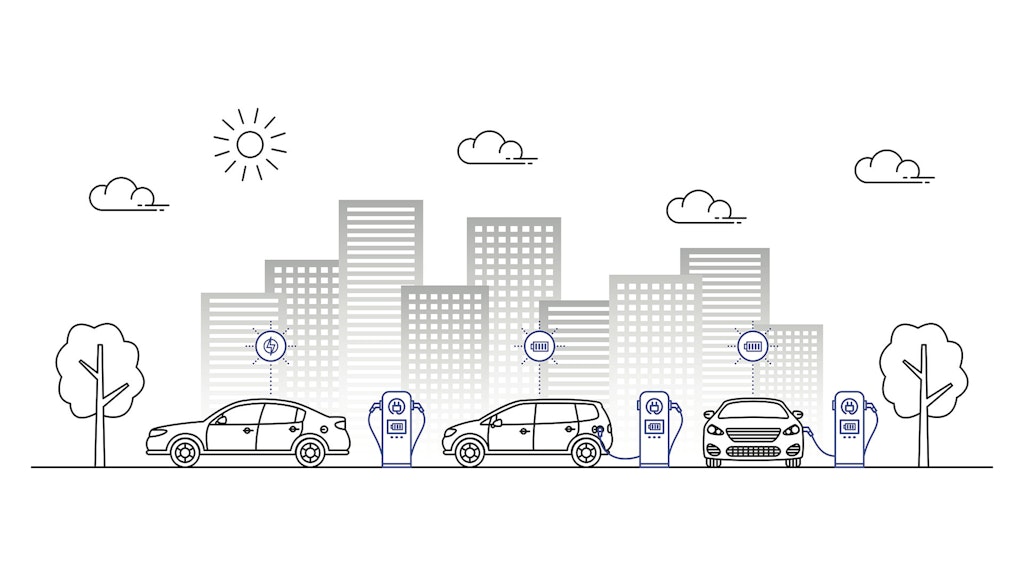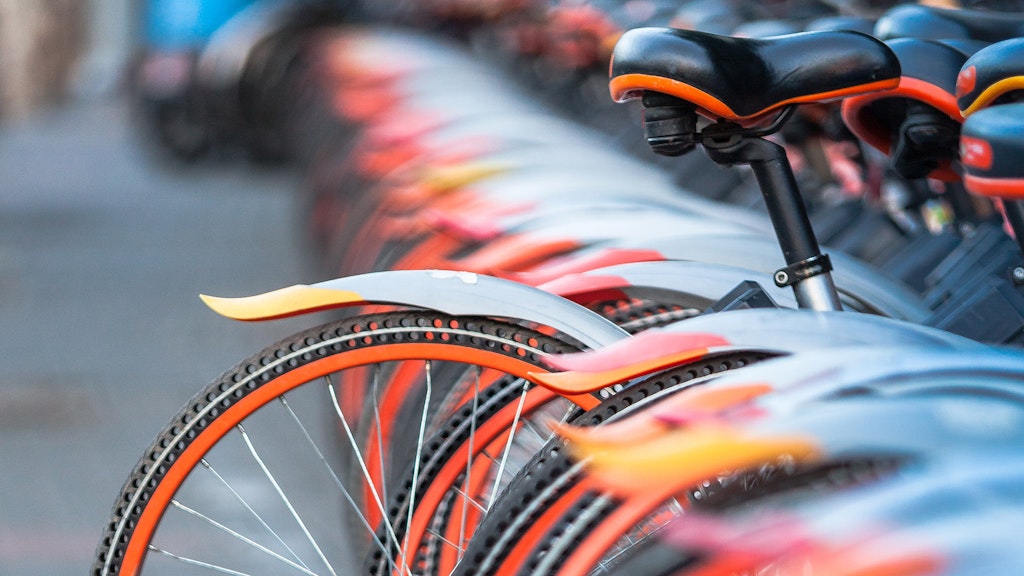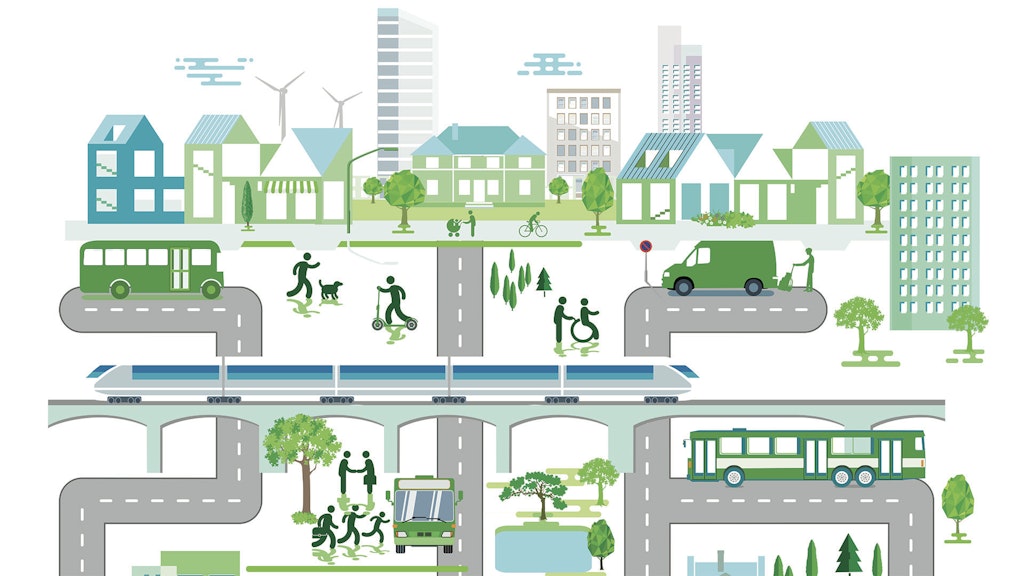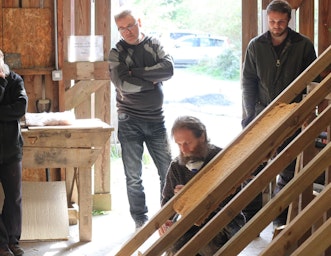
Sustainable transport – rural, urban and everywhere in between
December 17, 2020Home » Sustainable transport – rural, urban and everywhere in between
Changing the transport system can help tackle climate change and reduce air pollution. Adrian Watson and Suzanne Iuppa explore how policy shifts and investment in alternatives can drive a long-term change in how we travel.
Originally published in our member’s magazine Clean Slate 117 – Autumn 2020
Since the 1960s the UK’s approach to transport policy has hardly been sustainable. The past 50 years have been characterised by a lack of investment in essential infrastructure, privatisation of public transport, a reduction in the rail network, and only very limited policy support for walking and cycling.
Taken together, these outcomes have led to a rise in personal car ownership, resulting in increased air pollution and congestion in our urban centres, which were never designed for the number of vehicles we have on the road network today.
As this demand for personal mobility has increased (from 25 million vehicles in 1994 to over 38 million today in the UK, according to the Department for Transport), transport-related emissions have contributed substantively towards poor urban air pollution quality (notably nitrogen oxides and particulate matter), raised noise levels, increased exploitation of land resource, and more road traffic accidents.
Health and climate impacts
Air pollution is known to cause short and long term health effects, particularly for those with pre-existing heart or lung conditions, so many people are understandably concerned about pollution in the air that they breathe.
To meet this public health challenge, local authorities are tasked with managing air quality. In practice this means managing traffic and congestion, thereby controlling local pollution emissions and generally making transport more sustainable.
Reducing emissions from transport is also a key element in tackling climate change. Land-based transport accounts for one-fifth of UK greenhouse gas emissions, making transport one of the key areas to target in the transition to zero carbon.
Electrifying personal transport
Probably the major technological advance in making personal mobility greener has been the availability and improvement in hybrid and electric vehicles (EVs).
Most major vehicle manufacturers now have active EV development strategies, and the increased efficiency and range of newer EVs has largely addressed the range anxiety that many drivers see as a barrier to adoption.
As a result, EVs accounted for over 10% of UK passenger car registrations in 2020, up from 3% in 2016. This should also raise the availability of EVs on the used market in the next few years.
To speed up the transition to EVs, in November 2020 the UK government brought forward the deadline for the end of sales of combustion engine cars to 2030. There were also announcements of additional budget to support the rollout of domestic and street electric chargepoints, grants to incentivise EV purchase and the development and mass-scale production of electric vehicle batteries.
A significant modal shift to EVs will improve local air pollution but does not address all environmental concerns; there remain serious concerns regarding the environmental impact of the Lithium used in EV batteries which needs to be urgently addressed, particularly as EV use increases and Lithium demand grows.
Despite the recent UK government announcement, there remains the pressing need for improved EV rapid charging networks, especially in rural areas, and renewable energy supplies must be scaled up to ensure that the increased electricity demand is met with clean energy.

Policy support
There are many policy initiatives that local and national government can use to steer a modal shift towards more sustainable transport.
Taxation options that increase the cost of personal motoring and push the public towards public transport include: city centre congestion charging, increasing the cost of workplace car parking, fuel taxes, linking road tax to vehicle emission levels and introducing toll roads.
Like most taxation options, these schemes can raise levels of transport poverty, so accessible and low-cost mobility alternatives need to be supported.
Alongside financial sanctions, incentives also need to be made available to support more sustainable options. Nationally, low-emission vehicles are eligible for a plug-in grant of £3,000 and small businesses in London can benefit from an Ultra Low Emission Zone (ULEZ) diesel scrappage scheme (£3,500 – £9,500) towards the cost of replacing diesel vans that don’t meet the new ULEZ emissions standard in 2020.
If we are to reduce individual car use whilst maintaining current mobility levels (although increased homeworking during the COVID crisis raises the question of whether we actually need to travel as much as we do), the driving public needs to be provided with suitable alternatives to support the behaviour changes needed to deliver a permanent modal shift.
Large national or regional infrastructure schemes are hugely expensive, for example the HS2 rail link is likely to cost well over £80bn, and the recently announced Road Investment Strategy for England will cost £27.4bn between April 2020 to March 2025, therefore there appears to be plenty of scope for lower cost local or community-led schemes.
To successfully drive behaviour change and deliver long term sustainability, these schemes need to consider the appropriate national or local context for mobility and logistics, maintain or improve access to employment, education, food (and retail), healthcare and recreation facilities, and ideally attract community buy-in.
Cutting car use
In urban areas a fully integrated transport network that considers and promotes public transport, cycling and walking as viable alternatives to the car is key to delivering a greener alternative.
In the UK, London has probably the best example of an integrated transport system, which is made much easier to implement thanks to transport being locally regulated by Transport for London. A single cross-ticketing system in London makes it simpler for the public to use subsidised tubes, buses, river taxis and trams. In combination with a daily congestion charge for driving in central London (which increases for more polluting vehicles such as HGVs and coaches), this has increased the uptake of public transport in the city.
Elsewhere, expensive infrastructure schemes, such as the Metrolink in Greater Manchester, have reintroduced lower polluting light tramway systems back to the UK.
Cycling is promoted through the government’s ‘Cycle to Work’ scheme, which provides tax incentives to cycling adopters in conjunction with workplaces. Regional cycling promotion schemes such as Bristol City Council’s three-year partnership with British Cycling can help increase uptake, as can community bicycle sharing schemes such as Mobikes, which are available in many city centres worldwide.
Manchester has also introduced Dutch-style cycle lanes, which reduces the space available to road users and physically separates pedestrians and cyclists from road traffic, answering many of the safety issues that cyclists face in cities.
Where a journey requires a car, alternatives to individual ownership include car club membership, where vehicles can be leased for individual journeys or short time periods.

Redesigning our towns and cities
In the mid-term timescale, the design of our town centres and neighbourhoods can be reconfigured, reducing the need for transport and encouraging shared spaces to promote pedestrianisation and cycle use.
For many years, planning policy leading to urban sprawl and shopping malls located on the urban fringe has promoted the need for personal transport for access. Could higher density towns and cities with better located local employment, school and retail and leisure opportunities revitalise urban centres and reduce the need for transport?
A good example of a design approach to transport is a shared space scheme in the small town of Poynton in Cheshire, which has been replicated in many other locations. In 2012 Poynton’s streets were redesigned with extended pedestrian areas. Traffic lights were removed, and changes to street furniture, parking and sightlines significantly reduced average traffic speeds, making the area more pedestrian-friendly and a more attractive place to live, work and visit.

Rural solutions
An example of a rural project supporting green transport that incorporates some of these technology and policy approaches is led by a community-owned development trust, Open Newtown, based in Powys.
Open Newtown aims to deliver a low carbon transport project for Mid Wales during 2020 and 2021, installing public electric vehicle charge points, which will be available to locals, visitors and businesses alike, and establishing EVs within car clubs in towns across Mid Wales.
This locally owned not-for-private gain company will take on the assets and operations of the car clubs and has ambitions to sustain and grow the level of low carbon affordable transport across Mid Wales.
The project received European rural (Arwain) funding during 2019 to establish public charging sites and consult with a wide variety of stakeholders to identify needs and opportunities at the town level. It will offer direct support to get EVs into car clubs, particularly in those towns across Mid Wales where none exist.
Overall, it aims to make a difference to transport poverty in Powys and to address the ‘gaps’ in mobility provision in this rural area.
Towards zero carbon mobility
There is a need for a change in emphasis, away from the older transport policy approaches towards sustainable transport programmes that can meet society’s current and future mobility requirements. Many of the schemes and alternatives outlined here were met initially with local opposition from individuals and organisations keen to maintain the status quo. But when carefully planned, taking local context into account and gathering community support, these approaches can demonstrate improved mobility and deliver economic and environmental benefits in urban and rural settings.
About the authors
Adrian Watson has been Head of CAT’s Graduate School since 2018. He has been active in research in the links between air quality, transport and health for many years, which has included advising the Greater Manchester Transport Unit and membership of the NHS Transport Working Group.
Suzanne is a poet, community worker and conservationist living in the Dyfi Valley. She is a local project coordinator for Renew Wales and for Open Newtown’s Low Carbon Transport Scheme in North Powys.
- Graduate School
- Zero Carbon Britain
- Climate Change
- Transport
Related Topics
Related Pages
Related news


CAT Conversations: Sandy Stevens, CAT graduate
17th April 2025
CAT Student Bursaries Announced for 2025
30th January 2025
CAT stories – Nick Parsons and Mike Russell
29th January 2025Email Sign Up
Keep up to date with all the latest activities, events and online resources by signing up to our emails and following us on social media. And if you'd like to get involved and support our work, we'd love to welcome you as a CAT member.
